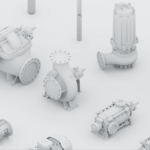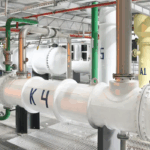The war has undoubtedly forced Ukrainians to alter their preferences and consumer habits. From the early days of the conflict, the packaging market—including materials and auxiliary tools—underwent significant changes. Perceptions of reliability, processing technologies, and packaging that simplifies life have rapidly evolved. Above all, technologies for processing and packaging that meet the needs of consumers during wartime are gaining momentum. For consumers who need to eat on the go, snacks must be packaged in appropriately sized containers that are portable, resealable, and reusable.
Manufacturers of packaging products face numerous requirements that vary depending on circumstances and needs. In conflict zones, the demand for protective packaging has grown due to increased risks of damage or contamination.
For example, during periods of interrupted raw material deliveries caused by shelling in various Ukrainian regions, manufacturers adapted by simplifying packaging methods, often labeling products with only essential information such as "sugar" or "buckwheat." At those moments, product advertisement took a backseat, with the primary focus being on preserving the product's qualities and delivering it to consumers as quickly as possible.
Communicating with product manufacturers, we understand that environmental safety, airtightness, ensuring the ease of opening and closing the product, protecting goods and preserving their functionality remain the most important factors during the war when designing and using packaging.
- Environmental Safety. The use of eco-friendly materials, reducing plastic components, and ensuring packaging recyclability have become key considerations.
- Shelf Life Preservation. The conditions of war, including supply, shipping, and storage interruptions, necessitate changes in packaging to extend shelf life. This includes vacuum packaging, gas-barrier materials, or modified atmosphere technologies.
- Sealing and Protection. Packaging must protect products from moisture, dust, contaminants, and potentially hazardous substances.
- Resistance to Physical Damage. Packaging must withstand impacts, shocks, and other mechanical stresses during transportation in conflict zones. As a result, demand for moisture-resistant, shock-proof, and water-resistant packaging has increased.
- Ease and Speed of Opening. To ensure quick access to goods in emergencies, packaging may need to allow easy opening without special tools.
- Reducing Plastic Usage. Conscious consumption and environmental concerns have made reducing plastic packaging and transitioning to eco-friendly alternatives a priority.
- Use of Renewable Materials. In conflict zones where resources are limited, demand for renewable packaging materials, such as biodegradable materials or recycled waste, has grown.
- Increased Demand for Medical Packaging. The demand for medical supplies and protective equipment has risen during the war, leading to a growing need for specialized medical packaging that ensures safe storage and transport of medicines, bandages, masks, and more.
- Identification and Labeling. War conditions require clear identification and labeling of packaging for quick and accurate recognition of its contents. During the initial months of the war, labeling requirements were simplified, with packaging indicating only the product name, quantity, and minimum shelf life.
- Informational Transparency. Martial law certainly affects information transparency.

The requirements for packaging include providing clear and reliable information about the product, for example, through QR codes that allow users to view detailed product information using smartphones. For quick responses, only the product's origin, composition, and production methods are indicated on the packaging.
By communicating with manufacturers daily, we understand that all their attention is currently focused on solutions in the field of processing and packaging. Manufacturers are searching for new packaging solutions that meet the needs and align with the modern requirements of the market.
It is important for us to respond flexibly to market demands together with manufacturers, as these demands reflect the urgent needs of consumers. We help product manufacturers convey their uniqueness to consumers, even in such challenging times. We carefully approach the selection of technological equipment, continuously search for new solutions, and offer innovative equipment.
Technologies are evolving rapidly, and we must stay informed in this field. We attend exhibitions, communicate with international partners, and observe major campaigns abroad. We know that well-organized packaging contributes to the convenience of product placement and storage.
Order equipment only from trusted suppliers. Remember! An excessively low price for equipment often indicates poor quality, hidden defects, lack of information about the equipment’s origin, and other issues.



